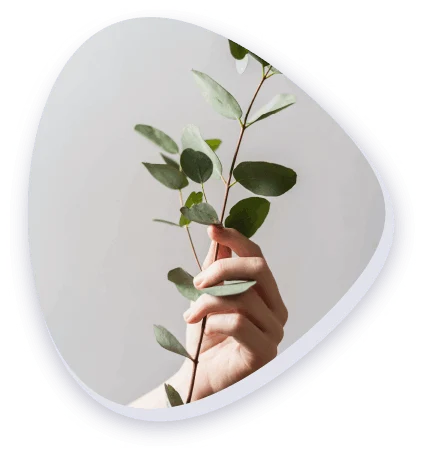Estrogen can wreak havoc on women and their menstrual cycles
What is estrogen and why do I need it?
Oestrogen/estrogen is a wonderful hormone that both men and women produce. For women it helps protect our heart, support bone density, keep everything juicy and plump, support our cognition, and of course its role alongside progesterone for reproductive health.
In recent times the awareness that high estrogen can cause a whole gamut of problems for women has emerged. High estrogen, estrogen dominance or a relative estrogen excess to progesterone can cause issues for women. You can have normal estrogen but low progesterone, or normal progesterone and high estrogen.
Different types of estrogen
There are three main types of estrogen, estradiol main one is produced by the ovaries, estrone is made from our body fat, our gut microbiome makes estrogen metabolites then we have the synthetic and toxic environmental xenoestrogens, which aren’t estrogen but act like it in the body.
Hormones throughout the menstrual cycle.
For women with a menstrual cycle, our hormones change throughout the cycle, no two days are identical. Estrogen peaks and troughs depending on where we are in our menstrual cycle.
Estrogen is high in the first part of the menstrual cycle, between bleeding and ovulation, with progesterone being the predominant hormone in the luteinising part, between ovulation and bleeding.
The follicular phase
The follicular phase is from the first day of the menstrual bleed and ends once we ovulate. The hypothalamus prompts the pituitary gland to release follicle-stimulating hormone (FSH). This hormone stimulates the ovary to produce around five to 20 follicles (tiny nodules or cysts). Follicles contain an egg. This is different to what is occurring in PCOS.
Each follicle houses an immature egg. Usually, only one follicle will mature into an egg, while the others die. The growth of the follicles stimulates the lining of the uterus to thicken in preparation for a possible pregnancy.
During the follicular phase, the developing follicle causes a rise in the level of oestrogen. The hypothalamus in the brain recognises these rising levels and releases a chemical called gonadotrophin-releasing hormone (GnRH). This hormone prompts the pituitary gland to raise levels of luteinising hormone (LH) and FSH.
Within two days, ovulation is triggered by the high levels of LH.
The rise in estrogen causes the uterine endometrium to proliferate (thicken) during the follicular phase.
How to know if your estrogen is high
You can test via a blood test, urine or saliva. For a simple blood test, the best time to test is on day 2/3 of your menstrual cycle is best
How your body deals with estrogen will impact your estrogen pool, it’s not just about how much estrogen you make but how you detox and remove it.
As a women’s health Naturopath, we always run initial tests to better understand if your estrogen levels are too high.
How your body detoxes and metabolises estrogen
Phase I pathway is the main metabolic pathway for the estrogen hormones. This is your first line of defence against toxins and uses a group of enzymes known as the cytochrome P450 family. These enzymes protect your cells from damage by converting volatile toxins into smaller substances meant for further detox and making toxins water-soluble to enter Phase 2
The liver than with the help of B vitamins, selenium and amino acid glycine, metabolizes the remaining estradiol and the converted estrone, breaking it down further, and excreting the excess from the body.
Many factors may affect the Phase I pathway, alcohol or drugs, oral contraceptives, cortisone, a lack of nutrients, toxins, and a diet high in saturated fats and, sugars.
Phase II detoxification
During Phase II, a process known as conjugation begins, in which nutrients such as amino acids are combined with hormones and other substances, to convert them to water-soluble compounds that can be excreted efficiently in the urine or stool.
Phase 2 is all about conjugation, which uses 6 different pathways to take water-soluble Phase 1 metabolites out of your body through your bile, urine, and stool.
Methylation
Methylation, also known as methyl metabolism, is the process in which small parts of molecules, called methyl groups, are passed from one molecule to another. Once estrogens are methylated, they can be easily excreted. For the liver to have an adequate supply of methyl groups available, an adequate intake of vitamins B6 (e.g., whole grains and legumes) and B12 (primarily from animal products), and folic acid (such as from green leafy vegetables) are necessary. S-adenylmethionine (SAMe) is also a rich source of methyl groups and sulphur.
Sulfation
Sulfation is the process in which sulphur groups are added to molecules to prepare them for easy excretion. Adequate amounts of foods containing sulphur should be in the diet, including egg yolks, garlic, onions, and Brussels sprouts. Animal protein is another important source of sulphur.
Glucuronidation
Glucuronidation is another process by which estrogens can be conjugated. This type of conjugation may be affected by the condition of the intestines. If the intestines have an abundance of abnormal bacteria, an enzyme produced by these bacteria may cut off the conjugated part from the estrogen. The estrogen that would have been excreted is then reabsorbed back into the body, allowing even estrogens produced by the body to build up to excessive levels. The supplement calcium D-glucarate (also found in fruits and vegetables) can render the enzyme inactive and prevent this buildup.
Glutathione
Glutathione conjugation is the process in which glutathione, another sulphur-containing molecule, is added to estrogen for easy excretion. Foods such as avocado, walnuts, and asparagus are rich in glutathione, and vitamin C stimulates the body to produce more of it. Glutathione depletion can be due to a lack of the essential nutrients and amino acids (found in fresh fruits, vegetables, fish, and meats) that are needed to synthesize it.
What happens if I have too much estrogen?
A relative estrogen excess can cause.
- PMS
- Breast tenderness pain and swelling
- Fibroids
- Heavy periods – Estrogen’s role is to make a cushy and plump endometrial lining, if you have too much, this can cause heavy bleeding,
- Suppressing the function of the thyroid hormones. High blood levels of estrogen signal the liver to increase the production of thyroid-binding globulin (TBG). This is an inhibitor protein that binds to the thyroid hormone, reducing the amount of T3 and T4 available for use by cells
What can cause high estrogen?
- Oral contraceptives such as the pill contain xenoestrogens, which can hurt our microbiome, and our good gut bacteria and increase the recycling of oestrogen
- Suboptimal detoxification or clearance. We break down and excrete our hormones via the liver and then to the bowel. Nutrient status, the health and diversity of the gut and the burden on the liver can all impact clearance
- Histamine and mast cell activation – Estrogen stimulates mast cells to make more histamine plus estrogen down-regulates the DAO enzyme that you need to clear histamine. The result is more histamine, which, stimulates the ovaries to make more estrogen. It becomes a vicious cycle. Symptoms can improve by reducing histamine rich foods and avoiding dairy.
- Estrogen receptor hypersensitivity. If you have chronic inflammation or high histamine you will be more sensitive to estrogen. Iodine down-regulates estrogen receptors, thereby decreasing estrogen sensitivity. Iodine is particularly helpful for breast symptoms such as tenderness or breast cysts.
How to decrease estrogen naturally?
As a women’s health Naturopath, we work on natrual ways to decrease estrogen levels. Here’s a few examples on how we can do this:
- Don’t take hormonal birth control.
- Reduce alcohol to promote healthy estrogen metabolism.
- Eat vegetables for their beneficial phytoestrogen content. Phytoestrogens promote healthy estrogen metabolism and shelter the body from too much estrogen.
- Maintain a healthy body weight to reduce the production of estrone.
- Reduce exposure to xenoestrogens such as plastics and pesticides.
- Avoid cow’s dairy to reduce histamine.
- Ensure regular bowel movements
- A diet that’s rich in fibre and prebiotics to ensure diverse gut flora.
You need some extra help with your hormones
Hi, I’m Lindsay, a Sydney Naturopath. I help women with acne, PCOS and hormonal complaints. Hormonal imbalances I see commonly see in the clinic. It can cause irregular painful periods, with PMS and breast soreness, it can inflame acne and be an issue with PCOS when women don’t ovulate.
This is something I can help with. Through case taking and assessing your blood tests, I create a plan to help you balance your estrogen and clear your skin. If you would like to talk things through and understand how I can help, make a booking for a clarity call, this allows you to talk things through and understand what is involved to get your hormones balanced.
You can make a time for a clarity call to discuss how Naturopathy can help.
Lindsay


